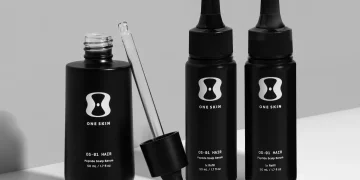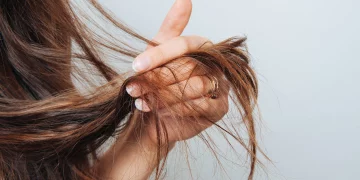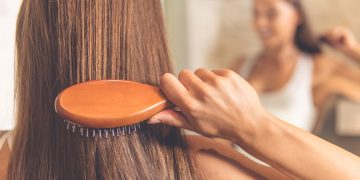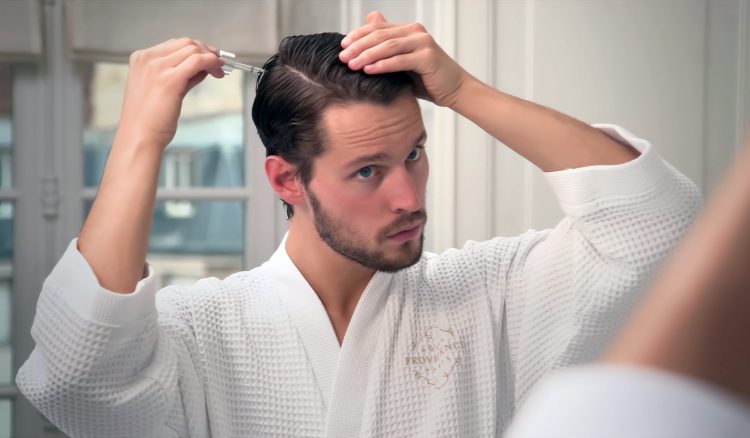This seemingly simple question has sparked endless debate in bathrooms, salons, and online forums. The answer, frustratingly, is not a one-size-fits-all number. For every person who swears by a daily lather for pristine freshness, another champions a “train your hair” regimen with weekly washes. This confusion often stems from conflicting advice, marketing messages, and a fundamental misunderstanding of scalp biology. So, how do we cut through the noise and find our personal hair washing sweet spot?
The truth is, the optimal hair washing frequency is a dynamic equation, unique to each individual. It hinges on a delicate balance of your specific hair type, your scalp’s natural oil production, and your daily lifestyle. This article will demystify the science behind sebum, provide a clear guide tailored to your hair’s characteristics, and synthesize expert opinions from top trichologists and stylists to help you develop a routine that fosters healthy hair from the roots to the ends.
The Scalp’s Natural Rhythm: Understanding Oil Balance and the “Training” Myth
At the heart of the hair washing debate lies sebum, the natural oil produced by sebaceous glands in the scalp. Sebum is not the enemy; it’s a built-in conditioning system designed to keep your hair moisturized, protected, and shiny. The rate at which your scalp produces sebum is primarily determined by genetics, but it can also be influenced by hormones, diet, stress, and environmental factors.
When you wash your hair with shampoo, you are essentially performing a degreasing operation. Shampoo, particularly those containing sulfates, is a surfactant that binds to oil and dirt, allowing them to be rinsed away. The immediate result is clean, oil-free hair and scalp. However, the aftermath is a blank slate. For some, the scalp may respond to this sudden removal of oil by ramping up production to re-establish its preferred level of lubrication, leading to a greasy feel sooner than expected.
This phenomenon is the basis of the popular advice to “train your hair” to be less oily by washing it less frequently. The theory is that by extending the time between washes, you can “tell” your sebaceous glands to slow down production.
What the Experts Say:
While the concept has merit, trichologists (specialists in hair and scalp health) offer a more nuanced view. Dr. Michelle Blaisure, a trichologist with BosleyMD, explains, “You can’t truly ‘train’ your glands to produce less oil. Their activity is hormonally driven. What you are actually doing is training your eyes and your mind to become accustomed to a different level of oil at the root.” In other words, the scalp doesn’t necessarily produce less oil over time; you simply become more comfortable with the feeling of having some oil present, and your hair’s texture may adapt.
The real benefit of finding the right, less-frequent schedule is avoiding the stripping-and-overproducing cycle. Washing too often with harsh shampoos can lead to a dry, tight, and irritated scalp, which may overcompensate with oil production while leaving the hair shafts parched and brittle. The goal, therefore, is to find a balance where you are removing excess oil and buildup without completely decimating the scalp’s protective lipid barrier.

A Tailored Guide: How Hair Type and Texture Dictate Your Schedule
Your hair’s structure and condition are the most critical factors in determining your ideal washing frequency. Here’s a detailed breakdown:
1. Fine, Straight Hair
This hair type is typically the oiliest. The sebum produced at the scalp travels down the straight, smooth hair shaft with ease, quickly weighing hair down and making it look greasy at the roots.
- Recommended Frequency: Every other day to daily.
- Rationale: Fine hair needs regular cleansing to prevent a limp, flat appearance. Using a gentle, volumizing shampoo can help clean without excessive stripping. Dry shampoo can be an excellent tool for extending the life of a style between washes.
2. Medium to Thick, Wavy Hair
Wavy hair has more texture, which creates slight obstacles for the journey of sebum from root to tip. This means the roots may get oily before the ends do.
- Recommended Frequency: 2 to 3 times per week.
- Rationale: This schedule allows for a manageable amount of oil at the roots, which can actually help define waves and add texture. Washing too often can make wavy hair frizzy and unmanageable. A focus should be on hydrating the mid-lengths and ends while the scalp gets cleansed.
3. Coarse, Curly, or Coily Hair
This hair texture has the most twists and turns, making it incredibly difficult for natural oils to travel from the scalp down the hair shaft. The result is a scalp that may not feel excessively oily, while the ends are chronically dry and prone to breakage.
- Recommended Frequency: Once a week, or even every other week.
- Rationale: The primary goal for this hair type is moisture retention. Frequent washing strips the hair of its precious natural oils, leading to extreme dryness, frizz, and damage. Washing weekly with a moisturizing, sulfate-free shampoo and following with a deep conditioner is key to maintaining health and definition.
4. Chemically Treated, Colored, or Damaged Hair
Whether it’s bleached, permed, or frequently heat-styled, this hair is inherently more porous and fragile. Its cuticle is compromised, making it susceptible to moisture loss.
- Recommended Frequency: 2 to 3 times a week, or as needed.
- Rationale: Over-washing will fade color faster and exacerbate dryness and brittility. Using color-safe, reparative shampoos and focusing heavily on conditioner and hair masks is crucial. The schedule should be based more on scalp need than hair need, often relying on dry shampoo and protective styles to extend time between washes.
Synthesizing Expert Opinions: The Golden Rules and Red Flags
While individual schedules vary, experts across the board agree on several fundamental principles.
The Consensus View:
- Listen to Your Scalp, Not Just Your Hair: The decision to wash should be driven by how your scalp feels—oily, itchy, or flaky—not just how your hair looks. Your hair can sometimes be refreshed with water or conditioner alone.
- It’s Okay to Get Greasy: A little oil at the roots is normal and healthy. Striving for a completely oil-free scalp 24/7 is an unrealistic and potentially damaging goal.
- The Water Temperature Matters: Always rinse with cool or lukewarm water. Hot water can strip oils excessively and irritate the scalp.
- Shampoo the Scalp, Condition the Ends: This is the golden rule of hair washing. Concentrate your shampooing efforts on massaging the scalp to break up oil and buildup. Then, apply conditioner primarily from the mid-lengths to the ends, where hair is oldest and most damaged.
When to Wash More Frequently:
Experts agree you should wash your hair after activities that cause heavy sweating or exposure to pollutants and chlorine. Sweat mixes with sebum and can lead to irritation, inflammation, and even odor if not cleansed. Similarly, chlorine, saltwater, and environmental pollutants can dry out hair and cause buildup that requires shampoo to remove.
Recognizing the Signs of an Imbalanced Routine:
Your hair and scalp will tell you when you’ve got it wrong.
- You’re Washing Too Often:
- Your scalp feels tight, dry, and itchy.
- Your hair is frizzy, staticky, and difficult to manage.
- Your hair looks dull and feels straw-like.
- You notice an increase in breakage.
- You’re Not Washing Often Enough:
- Your scalp is itchy, flaky, or has a noticeable odor.
- You see an increase in acne on your forehead or back.
- Your hair looks stringy, limp, and feels heavy.
- There is visible product and oil buildup at the roots.
Conclusion: Your Personalized Prescription for Clean Hair
The search for the perfect hair washing schedule is a journey of self-discovery, not a destination defined by a universal rule. There is no moral virtue in washing daily, nor is there a prize for going a full week without shampoo. The “right” answer is the one that leaves your scalp feeling comfortable and your hair looking and feeling its healthiest.
By understanding your unique hair type, respecting your scalp’s natural biology, and heeding the expert advice to focus on scalp health, you can move beyond guesswork. Let go of arbitrary rules and instead, become an observer of your own body’s signals. Experiment, adjust, and find the rhythm that gives you the balance of cleanliness, vitality, and manageability you desire. Your perfect wash day schedule has been waiting for you all along—not in a magazine or a viral TikTok trend, but in the mirror.












































